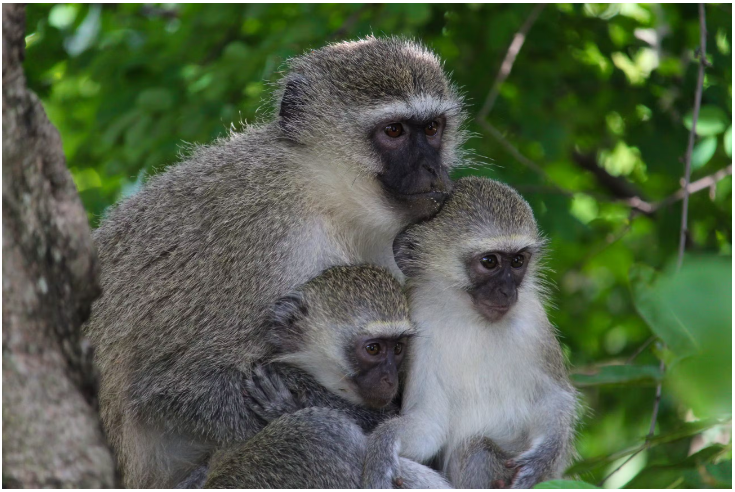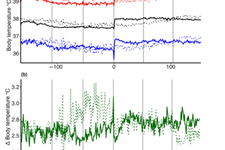News

Gestational Hypothermia Detected in Wild Vervet Monkeys
Primate gestation occurs at a high cost to the female wild vervet monkey (Chlorocebus pygerythrus) mostly due to the long gestational period. Reproductive effort should or most likely is naturally repressed if it poses a risk of survival for the mother. During periods of limited resources, females in poor condition are less likely to conceive, and if they do conceive, are less likely to complete the pregnancy compared to females in good condition.
Total five year study of wild vervet monkeys
In general mammals maintain their body temperature at a narrow temperature range. However, gestational hypothermia has been shown in a few mammal species, and the hypothesis is that this enables the mother to balance her body temperature, due to higher temperature of the foetus. This in return gives the mother greater chance to maintain her body temperature close to normal and not going into teratogenic temperatures.
In a recent study, a collaboration of scientists studied three groups of wild vervet monkeys for five years and predicted that they would show hypothermia and improved homeothermy during gestation and would increase body temperature above normal during lactation.
One year of temperature measurements
Scientists from Nottingham Trent University, UK, University of Lethbridge, Canada, University of South Africa, University of Witwatersrand, South Africa, and University of Canterbury, New Zealand implanted Star-Oddi’s DST centi-T temperature loggers in 30 wild vervet monkeys (Chlorocebus pygerythrus). They were set to measure temperature every 5 minutes for a 12 month period. Maternal core body temperature profiles were tracked for 23 births over a 5-year period and compared to those of non-reproductive females.
Gestation period hypothermia detected
The pregnant females became increasingly hypothermic during the gestational period but returned to normal shortly after birth. Gestating females consistently had lower 24-h body temperature compared to non-pregnant females, however, during drought periods the non-pregnant females had lower body temperature compared to the pregnant ones. Gestating females had consistently narrower 24-h temperature amplitudes compared to the non-pregnant females.
Lactation period - higher mean and minima temperature
Lactating female monkeys had higher 24-h mean and minima temperatures, but lower 24-h maximal and narrower temperature amplitudes in comparison with the non-pregnant females. As lactation progressed, the females had higher max 24-h temperatures but no change in means, minima, or amplitudes. The effect of drought periods had lowering effects on maxima, minima, and wider temperature amplitudes. Lactating females showed lower minima during drought periods.
Predicted pattern of gestational hypothermia observed.
The predicted hypothermia pattern was observed, reinforcing the hypothesis that maternal thermoregulation supports and provides optimal temperature for development and protection of the foetus from potential heat-induced teratogenic effects.
Fig 1. From the article showing the average (a) 24-h mean (black), minimum (blue) and maximum (red), and (b) amplitude (green) of body temperature rhythm during preproduction (solid lines, N=23 births from 14 monkeys) and time-matched non-reproductive (dotted lines, N=30 monkeys) periods, coinciding with the 164 days of gestation and 155 days of lactation, centred on Day 0, the day of parturition. Grey lines demarcate trimester.
The article was published in Functional Ecology and can be accessed here.

